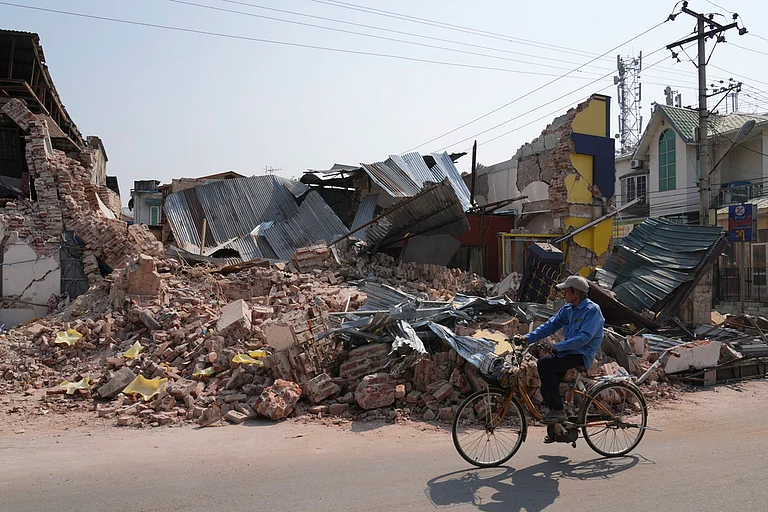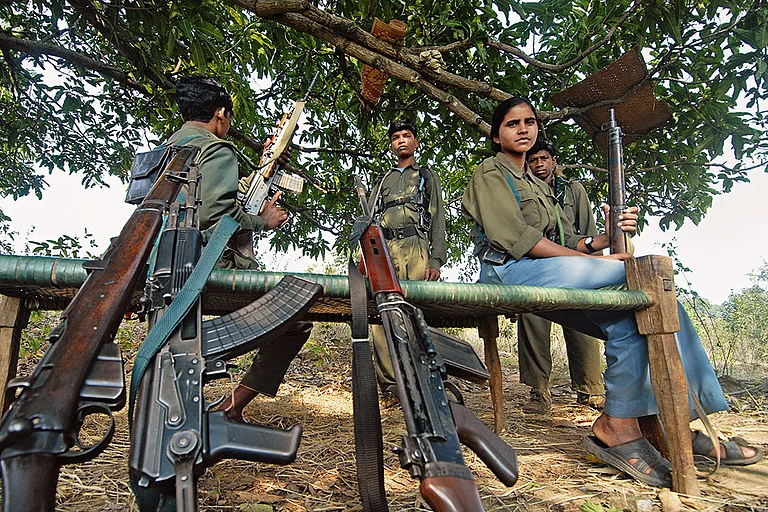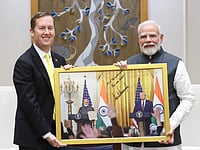The Modi government’s decision earlier this month to construct a fence along the international border between India and Myanmar and scrap the existing free movement access for people living on the border villagers have received mixed reactions from the northeast. While the Manipur government and the people of the valley have welcomed New Delhi’s move as a way to keep out illegal foreigners from coming to the state, the tribals living in the hill areas are unhappy. So are the people of Mizoram. Free movement up to 16 km on each side of the border was allowed so that people divided by artificial colonial boundaries by the colonial rulers, would preserve the cultural, ethnic, and sometimes familial connections of border residents.
The Centre flagged the two new announcements earlier this month as necessary measures to protect India’s sensitive northeastern border region. The ongoing civil war and instability in Myanmar have further muddied the waters. Fencing the 1,643-km border is a herculean task, considering much of it is in inhospitable terrain and passes through areas that are controlled by ethnic armies fighting the junta. The Myanmar government has little control here.
"It has been decided to construct a fence along the entire 1643-kilometre-long Indo-Myanmar border. To facilitate better surveillance, a patrol track along the border will also be paved," India’s Home minister Amit Shah had announced earlier this month. It sounds reassuring but is hardly effective.
This is the instinctive reaction of governments to migration from bordering countries. This is true not just in India but across the world. Whether it is the US President Donald Trump announcing a wall on the border with Mexico, or the Pakistan government wanting to fence its border with Afghanistan to protect itself from terror attacks.
In countries where the federal government does not control outlying areas, it becomes much more difficult like in the India-Myanmar border. The military junta’s writ does not extend to the far-flung areas. The cooperation of local warlords and communities are a must to work in areas where the fence is to be constructed. The centre is well aware of it and has had experience while dealing with the other projects in Myanmar. The hostility of insurgent armies is one reason why the once-hyped Kaladan multi-modal project announced by the Vajpayee government has not materialized.
Calling it PM Modi's resolve to secure our borders, Amit Shah said that the decision was taken in order to ensure the internal security of the country and to maintain the demographic structure of India’s North Eastern States bordering Myanmar.
But analyst Suhas Chakma, who tracks developments in the region closely has a different view and says this will make no difference. “The scrapping of the Free Movement Regime between India-Myanmar shall have no effect on the ground as formal routes are not used for movement of people. Hundreds of Burmese troops and thousands of refugees who fled from Myanmar to India have not used the formal routes. Rather, those who use FMR are most likely to return,’’ he explains.
"The Myanmar’s junta has collapsed from Arunachal Pradesh of India to Chittagong Hill Tracts of Bangladesh, the Burmese Border forces have fled there are no Burmese troops to man the borders on the Burmese side. India very soon shall have to engage with the Burmese insurgent groups, the de facto authorities in Chin State and Rakhine State, as a matter of fait accompli,” he explains. "If that is the scenario, how does scrapping of the FMR help? India is dealing with a classic failed State, it has to be realistic and the scrapping of the FMR does not address the ground realities,” says the director, Rights and Risks Analysis Group.
The Manipur government has welcomed the decision to fence the border. Meities living in the valley have long complained that ``foreigners’’ from Myanmar have occupied large tracts of land and would eventually reduce ethnic Meities into a minority in their own land. The tribals living in Manipur’s hills have denied these charges.
India’s former ambassador to Myanmar, Gautam Mukhopadhyay believes the decision is both historically and politically illogical. "The reality is that the decision to lift the FMR and fence the India-Myanmar border is a byproduct of the current conflict in Manipur between the state government and the majority Meitei community on the one hand and the Kuki-Zo-Hmar-Zomis who inhabit the hill areas,’’ he wrote in a recent piece of a daily newspaper. Moreover, the former diplomat believes that it goes against both India’s 'act east' and neighbourhood first policy which promotes people to people contacts. Myanmar is often talked about as India’s land connection to the larger Southeast Asian nations.
Promoting connectivity inside the country and with neighbouring nations is the mantra of the Modi government. But domestic political considerations as well as the civil war in Myanmar has forced India to re-think its strategy. It is not certain if either fencing the border or scrapping free movement will make much of a difference to the current situation.
Unlike in the past, the BJP government no longer welcomes refugees. Mizoram however has defied the central instructions to allow the nearly 31,000 Chin tribes who belong to the same family of tribes as the Mizos to take shelter in the state. India had from time to time flown back many of the soldiers fleeing from ethnic groups.
Meanwhile, February marks three years of the military coup and the civil war in Myanmar. The junta perhaps never expected the kind of resistance that was put up by not just the politicians but ordinary people of the country. The military had ruled for long periods in Myanmar and was confident that a crackdown would lead to submission. Yet despite the use of air power and heavy guns, the military is no nearer to subduing the resistance movement.
Initially, after the arrest of pro-democracy leader Aung San Suu Kyi in 1989, India, like many Western democracies, turned its back on the junta and demanded the immediate restoration of democracy. By the time Narasimha Rao became prime minister in 1991, New Delhi had an about-turn. The pragmatic PM believed India had no option but to engage with the ruling government in Myanmar. More so as Myanmar adjoined its sensitive northeastern states. India needed to work with the military government to check China’s growing footprints in Myanmar as well as for security and strategic considerations. The engagement that began then remained in place ever since. Myanmar became an important cog in Narasimha Rao’s "look east policy" renamed as the `act east policy’’ since Narendra Modi took office.
As Suhas Chakma points out, the military junta is on the back foot in the fight against democratic and ethnic forces. The army appears to be losing its grip on Myanmar. Is it time for India to once again weigh its options and keep a line open to the democratic leadership fighting the junta?



























